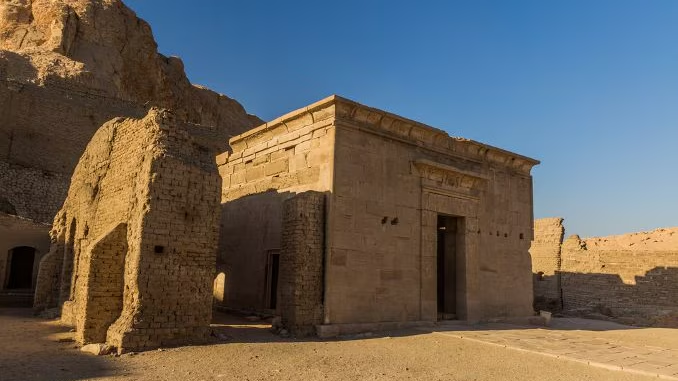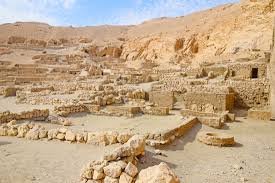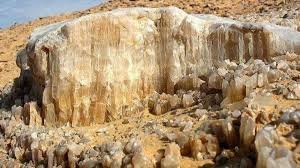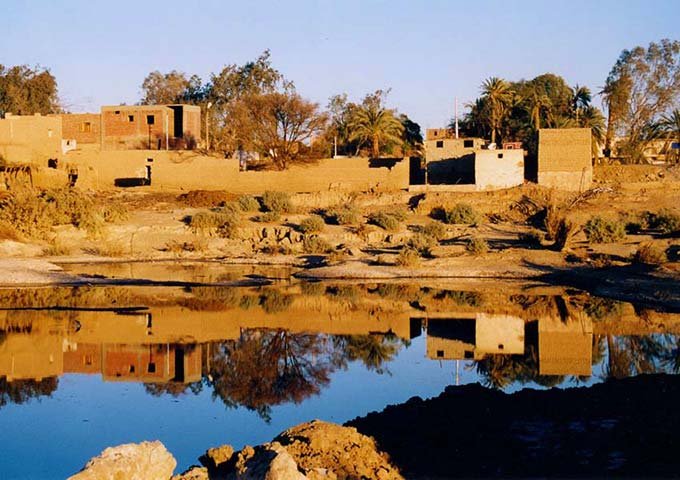Deir-El-Medina is one of the most fascinating and revealing ancient sites in Egypt, hidden away on the west bank of Luxor. When grand temples and royal tombs tell the stories of kings and gods, Deir-El-Medina gives us a rare glimpse into the genuine lives — and daily struggles — of the builders who fashioned them.
Deir El-Medina was not a city of pharaohs; rather, it was a city of skilled workers and artisans and their families, who lived with pride, secrecy, security, creativity, and sometimes, great hardship. Let us see what makes a visit to Deir El-Medina at Luxor essential for anyone craving connection that is more heartfelt with Egypt’s ancient past.
Deir El-Medina in Luxor: A Workers’ Village Like No Other
Deir-El-Medina housed workers who worked on the construction and decoration of tombs in the Valley of the Kings. They were highly skilled and respected; they even had a village of their own with homes, a temple, and a cemetery.
It was a community that lived, of course, in the shadow of flowing greatness, yet it left even the most personal accounts of rituals, daily routines, their religious beliefs, personal quarrels, sometimes even love stories.

Deir El-Medina in Luxor: Where Art and Humanity Meet
Inside the tombs of these workers, the artwork rivaled the most famous royal tombs—carefully painted with color and, all too often, with deep emotion.
Their art was not merely a profession but a legacy imparted from generation to generation.
Deir El-Medina in Luxor: A Life of Discipline and Difficulty
The life was not easy. The workers were kept on strict rules, their freedom limited, and harsh conditions remained a constant.
The village was remote and closely guarded to keep the tombs’ secrets safe. However, through everything, through loyalty and precision, they did mould Egypt’s most enduring monuments.
Deir-El-Medina in Luxor: Information You Should Know Before Visiting
Location: West Bank of Luxor, near the Valley of the Queens
Best Time of Visit: Early morning to avoid the heat
Must-See: Tombs of Workers, The Wall Paintings That Survive in Great Condition, Temple of Hathor, Desert Panoramas
Tip: Hire a guide! The stories behind the stones will mean much more to you once you grasp the lives of these people.
Deir-El-Medina in Luxor: What Makes This an Exceptionally Unique Experience
Almost all sites in Egypt are dedicated in honor of the king. Deir-El-Medina, on the other hand, pays tribute to the power of the people — to ordinary folks who threw up the extraordinary.
It sparks inspiration, yet it also calls for reflection: A reminder, that even in ancient times, greatness arose through sweat, devotion, and community.

Deir El-Medina in Luxor: Rare Inscriptions That Speak from the Human Soul
Perhaps one of the most touchable traces of the civilization of Deir El-Medina was left behind: the personal writings on walls, ostraca, and papyri. These messages revealed emotions, jokes, disputes, even love letters from more than 3,000 years ago.
Such rawness of human expression is rare in ancient sites. These inscriptions voice the once-silent people and somehow set their world unbelievably close.
Deir El-Medina in Luxor: Struggles behind the Glory
Egyptian temples command grandeur and divine glory; Deir El-Medina talks of a human experience — discipline, sacrifice, survival.
The workers here lived under very strict discipline being subjected to general restrictions for the protection of secrecy and were directly exposed to the scorching heat of the desert and to the heavy atmosphere resulting from this. Despite all restrictions and secrecy imposed upon them, these builders have been able to compose timeless masterpieces that even today stir our longing.
The challenges they faced remind us that frequently the greatest achievements in history require silent endurance.
A visit to Deir El-Medina in Luxor is a sobering reminder that Egypt wasn’t created by the pharaohs and gods alone; it was built by real people — people with dreams, struggles, and incredible abilities. Temples tell stories of power, but Deir El-Medina tells stories of love, labor, and life.
This site has an intimate feel to it, along with an honest and deeply moving atmosphere. Walking amidst the village and its tombs is almost the walking inside the minds and hearts of those very artisans whose beauty defined Egypt’s golden age.
If you are doing or have an Egypt tour, make sure this one is on your list. This is not another historical site — this is an emotional connection to history you’ll never forget.
Let these walls talk, and let the silence tell you how those who created beauty in the shadow of kings lived.




